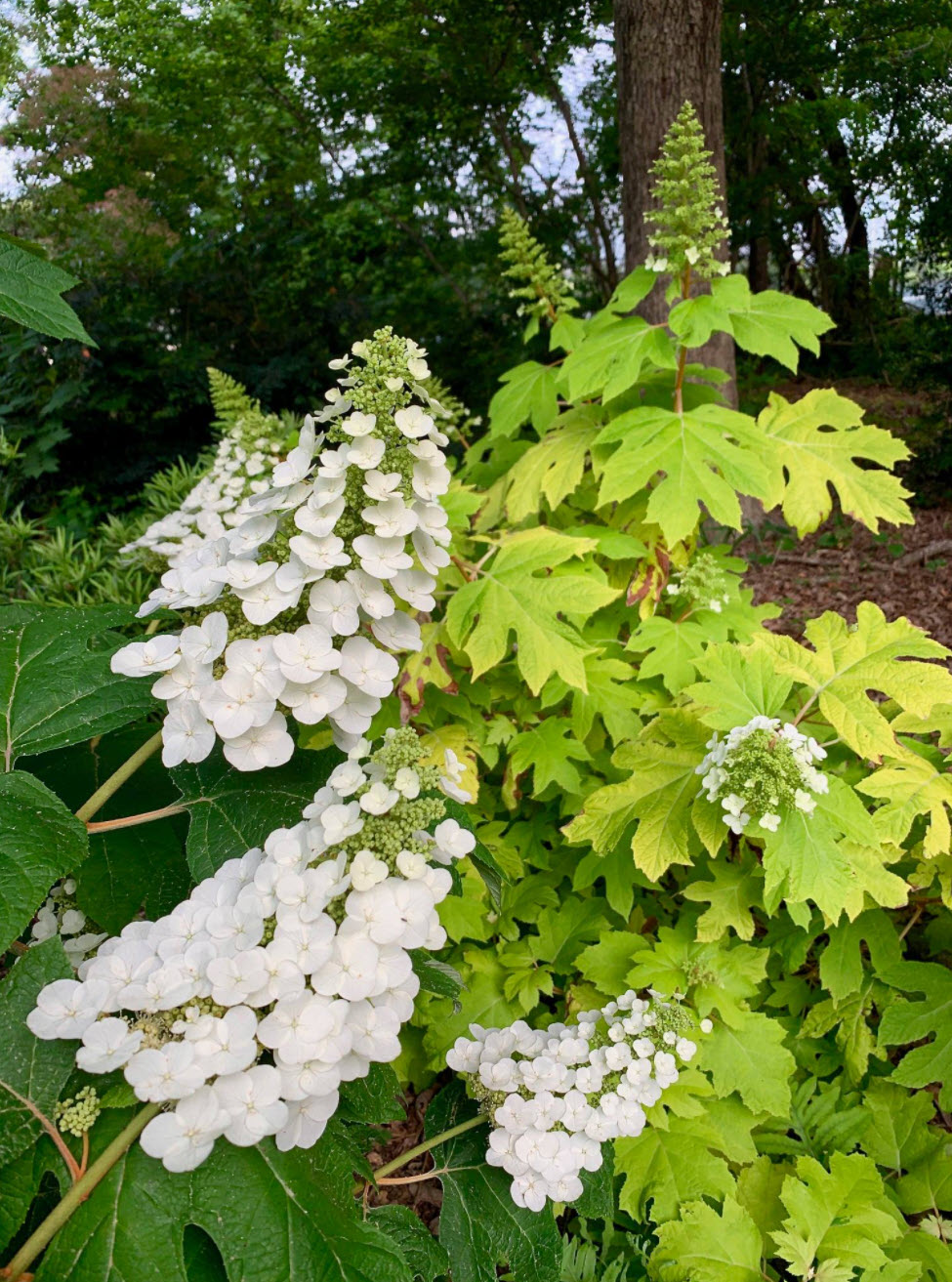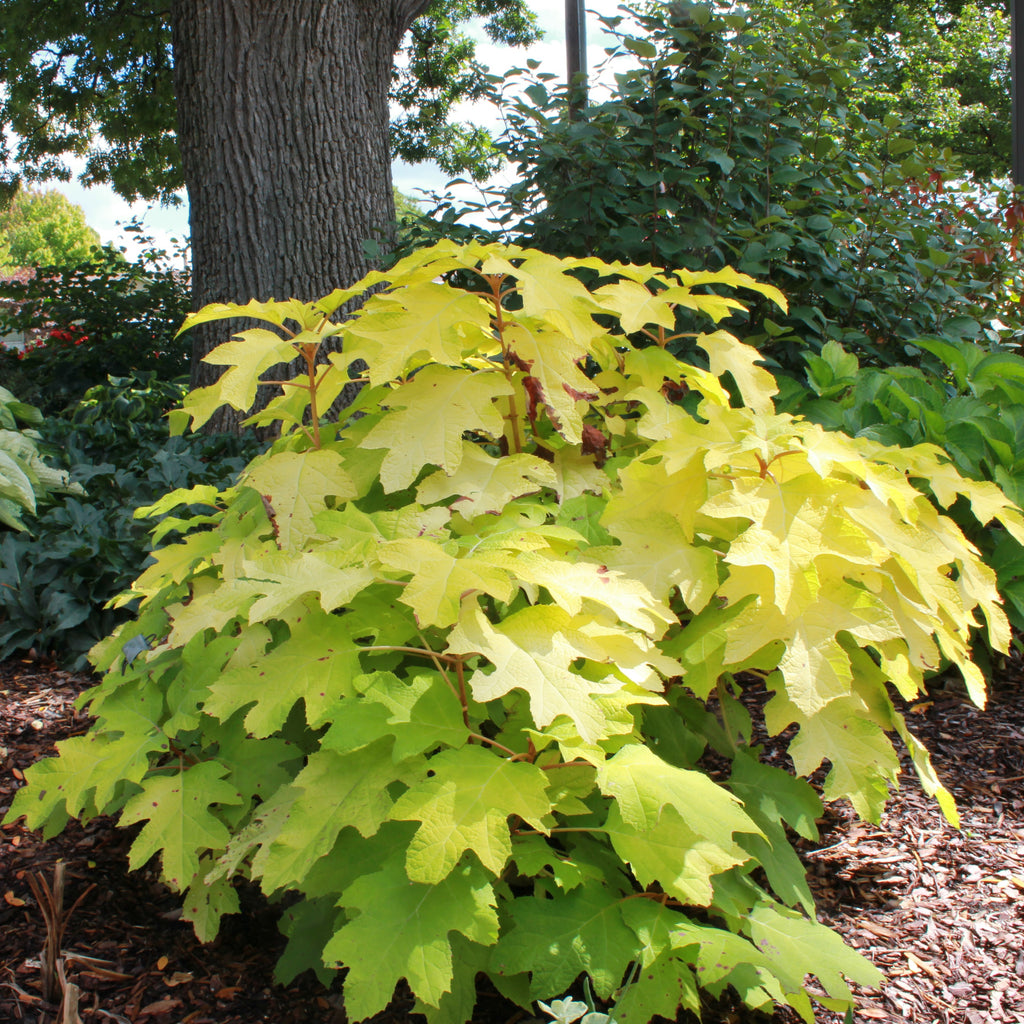Little Honey Oakleaf Hydrangea: The Golden Gem For Your Shade Garden
Little Honey Oakleaf Hydrangea: The Golden Gem for Your Shade Garden
Shade gardens can be a challenge to design, but they can also be incredibly rewarding. One of the best plants for adding color and interest to a shady spot is the little honey oakleaf hydrangea (Hydrangea quercifolia 'Sike's Dwarf'). This compact variety of oakleaf hydrangea grows only 36-48 inches tall, making it perfect for smaller gardens or areas with limited sunlight.
Little honey oakleaf hydrangeas are known for their golden yellow flowers, which bloom in late summer and early fall. The flowers are borne on large, pyramidal panicles that can reach up to 12 inches in length. The leaves of little honey oakleaf hydrangeas are also attractive, with a deep green color and lobed, oak-like shape.
In addition to their beauty, little honey oakleaf hydrangeas are also relatively easy to care for. They prefer rich, well-drained soil and partial to full shade. Water them regularly during the growing season, but be careful not to overwater them. Fertilize them once a year in the spring with a balanced fertilizer.
Little honey oakleaf hydrangeas are a great choice for gardeners who are looking for a colorful and low-maintenance plant for their shade garden. They are also deer-resistant, making them a good choice for gardens in areas with a high deer population.
Here are some additional tips for growing little honey oakleaf hydrangeas:
- Plant them in a location that receives partial to full shade.
- Amend the soil with compost or peat moss to improve drainage.
- Water them regularly, especially during hot, dry weather.
- Fertilize them once a year in the spring with a balanced fertilizer.
- Deadhead spent flowers to encourage new blooms.
- Protect them from frost in colder climates.
With a little care, little honey oakleaf hydrangeas will thrive in your shade garden for years to come.
Conclusion
Little honey oakleaf hydrangeas are a beautiful and versatile plant that can add a touch of elegance to any shade garden. They are relatively easy to care for and deer-resistant, making them a great choice for gardeners of all levels of experience. If you are looking for a colorful and low-maintenance plant for your shade garden, little honey oakleaf hydrangeas are a great option.
If you're looking for a beautiful and low-maintenance shrub to add to your garden, the little honey oakleaf hydrangea is a great option. This hardy plant is known for its bright chartreuse foliage and large, cone-shaped blooms that can range in color from white to pink to red. Little honey oakleaf hydrangeas are also relatively easy to care for, and they can thrive in a variety of soil conditions.
If you're interested in learning more about little honey oakleaf hydrangeas, I recommend visiting the website . This website has a wealth of information about this plant, including its care requirements, growth habits, and more. You can also find photos and videos of little honey oakleaf hydrangeas in bloom, so you can see for yourself how beautiful these plants can be.
FAQ of little honey oakleaf hydrangea
Question 1: What are the characteristics of little honey oakleaf hydrangea?
Answer: Little honey oakleaf hydrangea is a compact, slow-growing shrub that reaches 3 to 5 feet tall and wide. It has large, dark green leaves that turn red in the fall. The flowers are small and white, and they bloom in mid-summer.
Question 2: What are the growing conditions for little honey oakleaf hydrangea?
Answer: Little honey oakleaf hydrangea prefers full sun to partial shade and moist, well-drained soil. It is hardy in USDA zones 5-9.
Question 3: How to care for little honey oakleaf hydrangea?
Answer: Little honey oakleaf hydrangea is relatively easy to care for. Water it regularly, especially during hot, dry weather. Fertilize it in the spring with a balanced fertilizer. Prune it in the early spring to remove dead or damaged branches.
Question 4: How to propagate little honey oakleaf hydrangea?
Answer: Little honey oakleaf hydrangea can be propagated by softwood cuttings in the spring or summer. Take 4-6 inch cuttings from healthy, new growth. Remove the bottom leaves, and dip the cuttings in rooting hormone. Plant the cuttings in a well-draining potting mix. Keep the potting mix moist, and place the cuttings in a bright, indirect light location. The cuttings should root in 4-6 weeks.
Question 5: What are the pests and diseases that affect little honey oakleaf hydrangea?
Answer: Little honey oakleaf hydrangea is susceptible to a few pests and diseases, including aphids, spider mites, and powdery mildew. Aphids and spider mites can be controlled with insecticidal soap or neem oil. Powdery mildew can be controlled with a fungicide.
Image of little honey oakleaf hydrangea
5 different images of "little honey oakleaf hydrangea" from Pinterest:
- Image 1: A close-up of a little honey oakleaf hydrangea in bloom. The flowers are a pale yellow color and are arranged in cone-shaped clusters.
- Image 2: A full view of a little honey oakleaf hydrangea shrub. The shrub is covered in bright yellow leaves and the flowers are just starting to bloom.
- Image 3: A little honey oakleaf hydrangea shrub in fall. The leaves have turned a brilliant red color and the flowers are now a deep pink color.

- Image 4: A little honey oakleaf hydrangea shrub in a garden setting. The shrub is surrounded by other flowering plants and the flowers of the hydrangea are a beautiful contrast to the other colors in the garden.

- Image 5: A little honey oakleaf hydrangea shrub in a pot. The shrub is placed on a patio and the flowers are blooming beautifully.

Post a Comment for "Little Honey Oakleaf Hydrangea: The Golden Gem For Your Shade Garden"